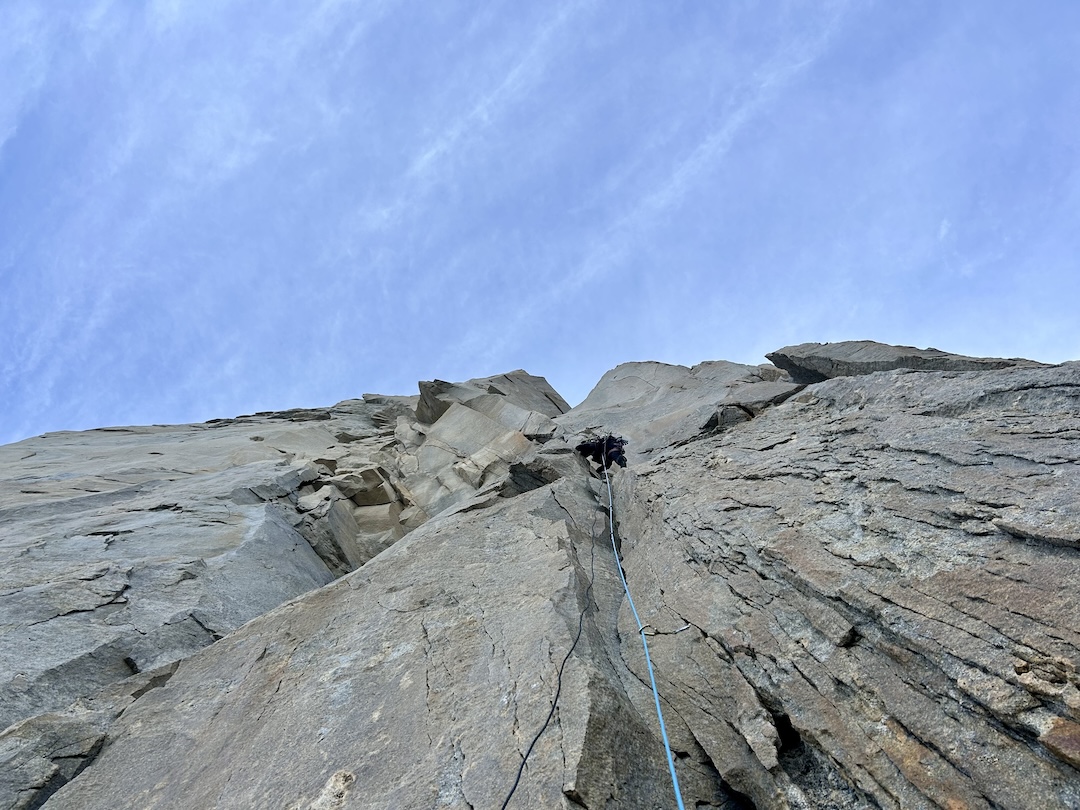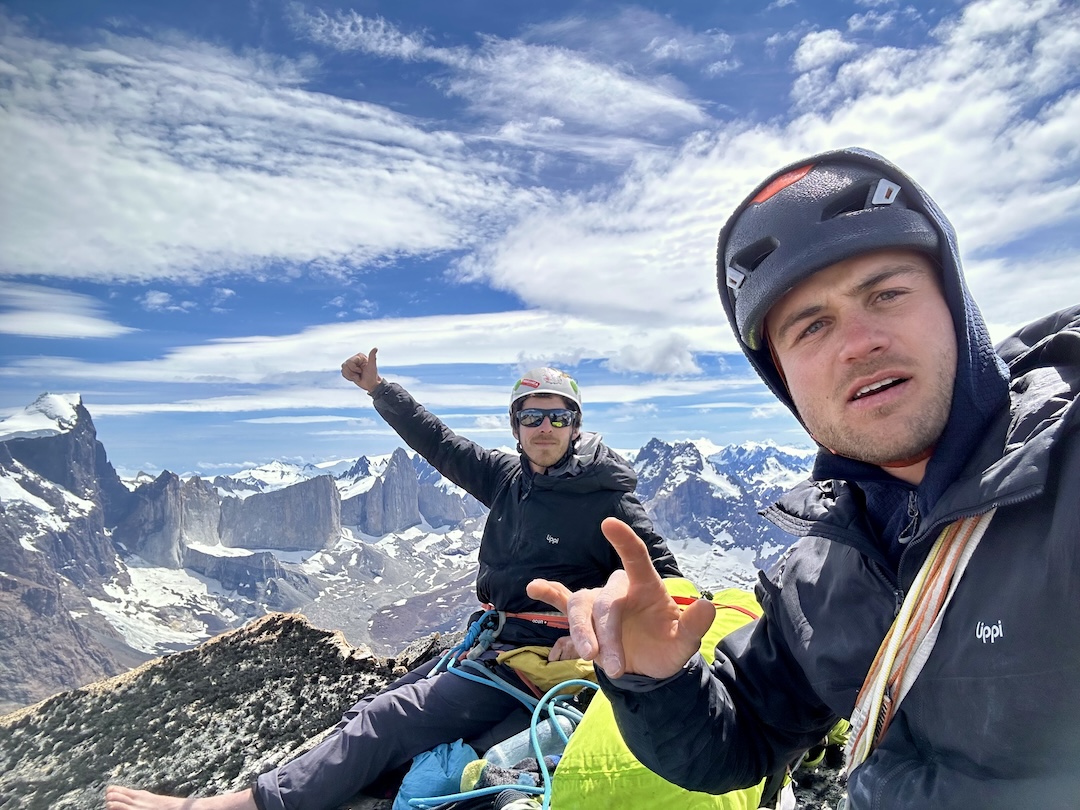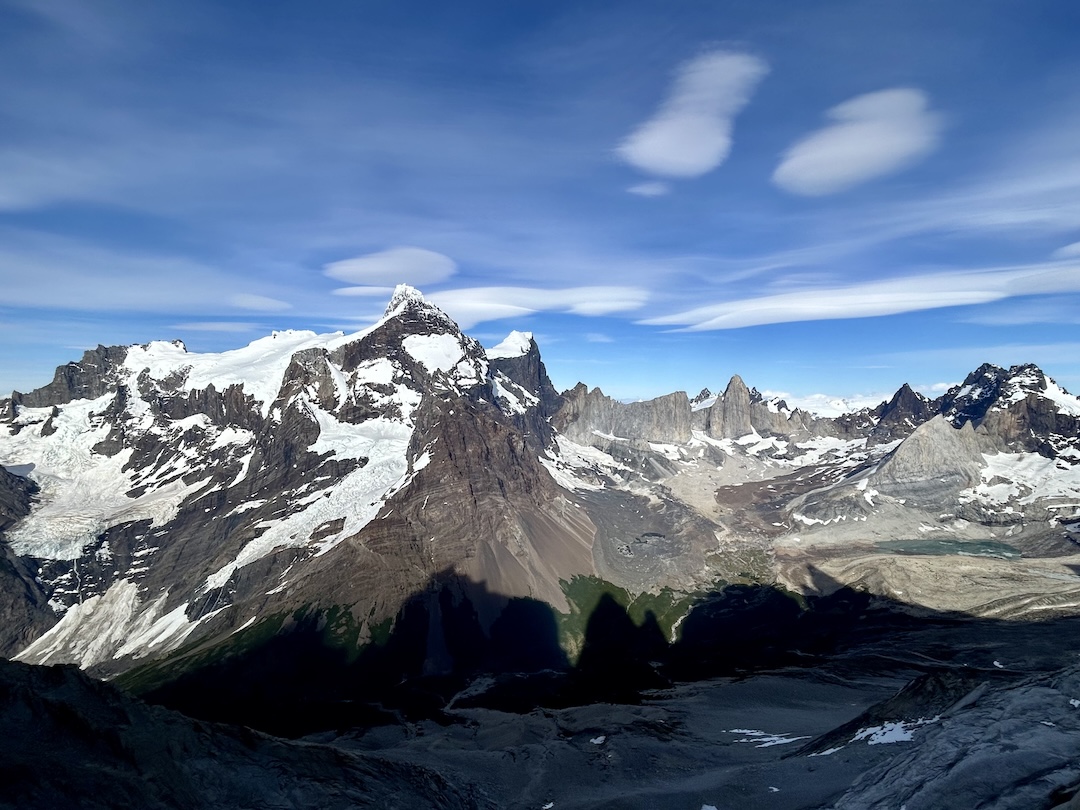La Mascara, West Face, Alborada
Chile, Southern Patagonia, Torres del Paine
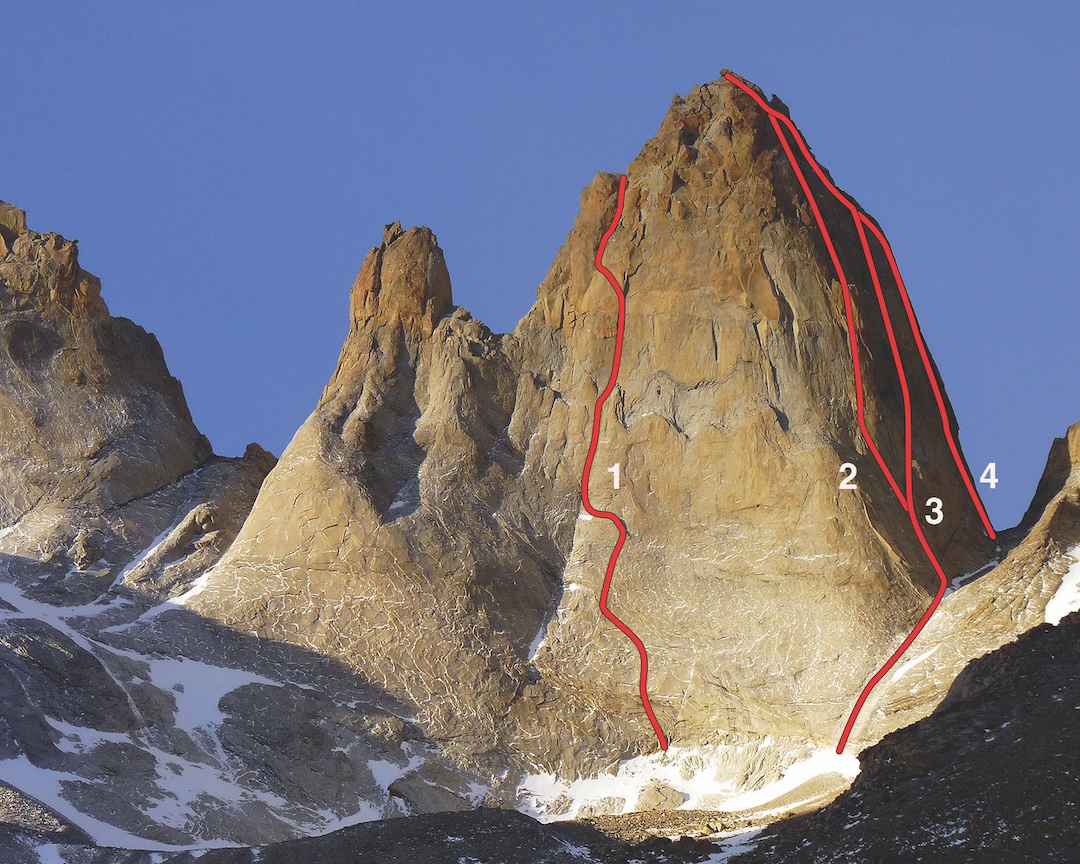
Hernán Rodríguez and I dumped our packs and enjoyed the mid-day sun, watching as hundreds of toudrists scurried like ants between the foot of the valley and the famed Británico lookout. Deep in the French Valley, I was happy to finally be off the busy trail and to quietly savor this magnificent cirque of big walls and glaciated behemoths. A dry riverbed led us to the foot of the west face of La Mascara (a.k.a. the Mummer, 50°59’48”S, 73°1’10”W), and a giant detached flake of golden granite created the perfect lean-to for a bivy.
With binoculars, we scanned the face. Light and shadow played tricks as the sun arched over the valley. Still not completely convinced the features on our envisioned line would connect, we agreed to leave the bivy at 4 a.m. and to study it from closer at sunrise.
On December 29, 2024, as the early morning coffee finally took effect below La Mascara, a clear blue on the horizon began to dilute the inky night sky. The first light was flat and honest, revealing a system of fissures that breathed possibility into panels of what had seemed like blank stone.
Carrying three liters of water, a few bars, and our belay jackets, we committed to our line and I began a block of run-out but gentle face climbing. Once in the main crack system, the wall steepened, yet mercifully lent itself to amazing free climbing, sculpted with face holds to appease sections where the crack slammed shut. The west faces of the French Valley seemto be so beaten by centuries of gale-force winds that grains of granite have carved incredible texture into the golden giants that encircle the valley.
My second block began at pitch seven. A strenuous hands-to-fists crack led into an overhanging, flaring offwidth, and my helmet stopped upward progress. After placing our widest piece overhead, I committed to laybacking the sharp wave of stone, pasting my feet against a pattering of small dishes on the opposing face.
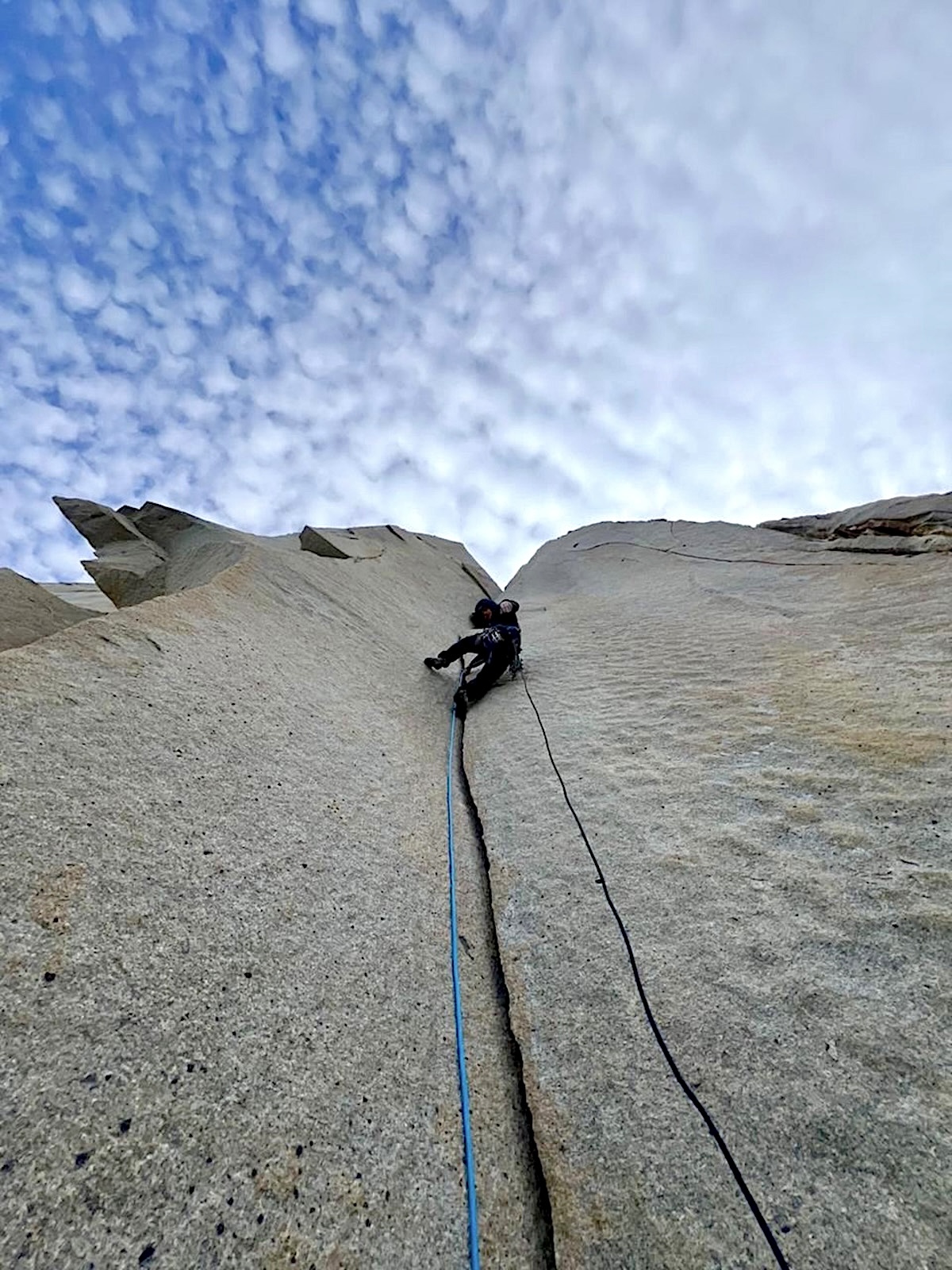
At 2 p.m., I weaved the rope up and around a series of poised flakes to reach the top. Hernán soon joined me, belayed off a couple of pitons that had been bashed into the summit many moons ago. A carpet of black lichen covered the summit block, inviting us to enjoy a siesta in the sun and rehydrate while taking in the view. Two more of Paine’s proudest big walls, La Hoja and La Espada, rose sharp and thin to the north, while the park’s tallest mountain, Paine Grande, relinquished tons of ancient glacial ice to gravity’s incessant pull, causing the entire valley to tremor in awe.
We rappelled the South African Route (500m, 5.10 A3, Cheesmond-Dawson, 1976), arriving at our bivy in the evening before escaping to the park rangers’ hut at Campamento Italiano as dark clouds and rain began to engulf the valley at midnight.
We named our route Alborada (“The Light at Dawn,” 600m climbing distance, 5.11+). I highly recommend it to parties looking for a steep single-day objective. We climbed 50m of the Cheesmond-Dawson line before branching left and climbing new terrain all the way to the summit shoulder. We left the route entirely clean. The trip up and down the face took 13 hours.
La Mascara’s west face holds potential for more high-quality free routes. The only other route on this aspect is an Italian line (Zanetti-Zanetti, 2020) on the far left side; this did not reach the summit and employed dozens of expansion bolts.
—Sebastian Pelletti, Chile


